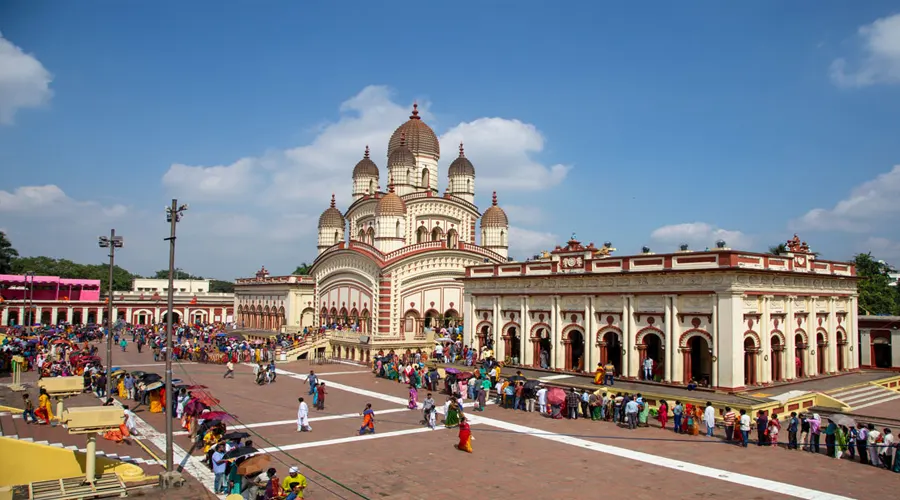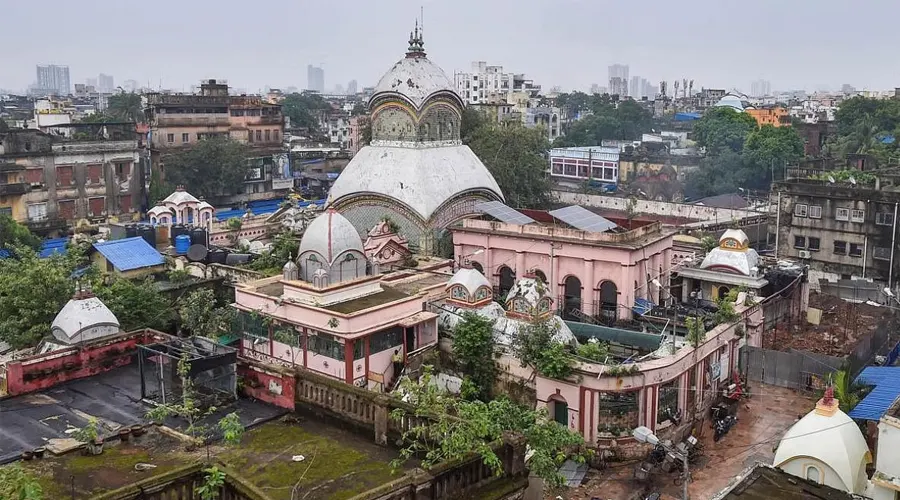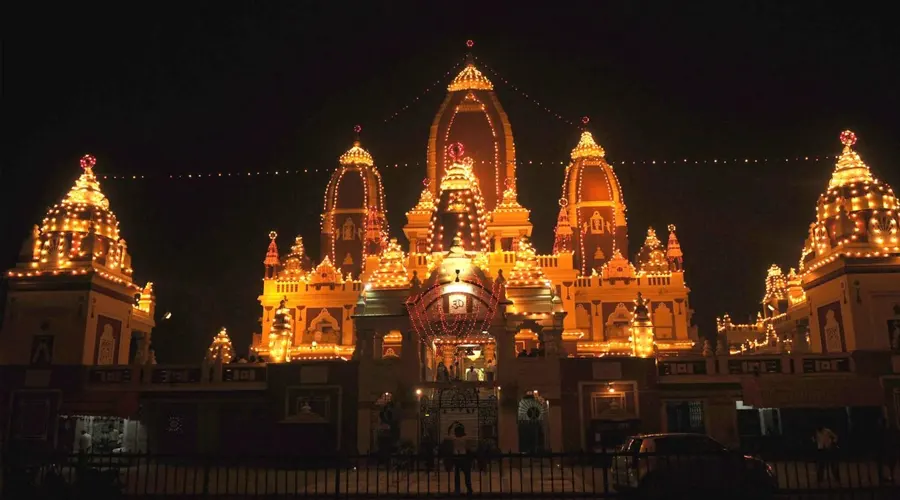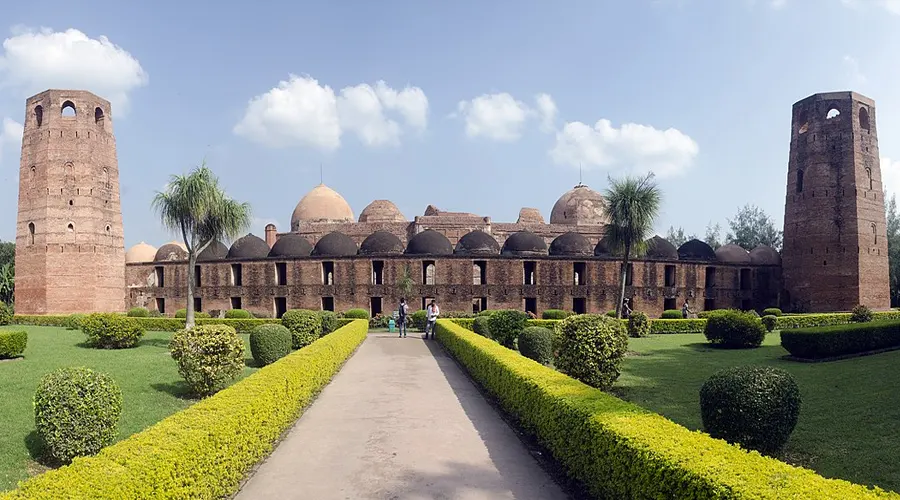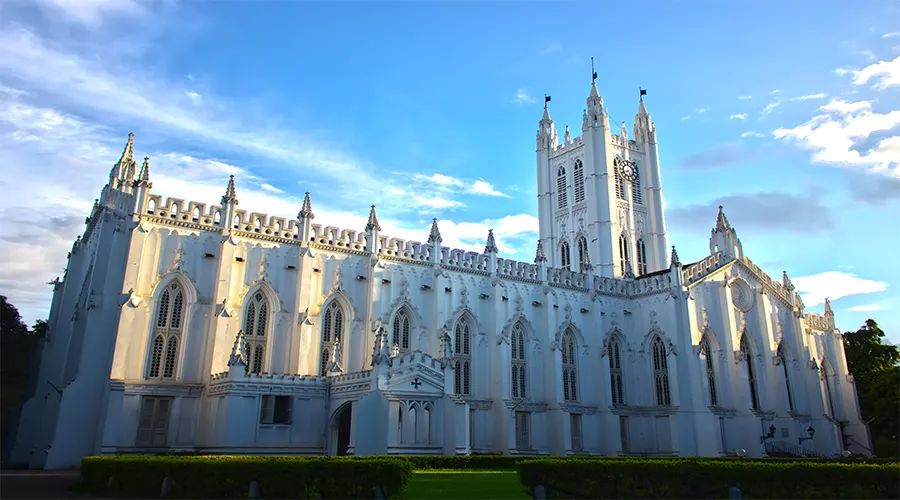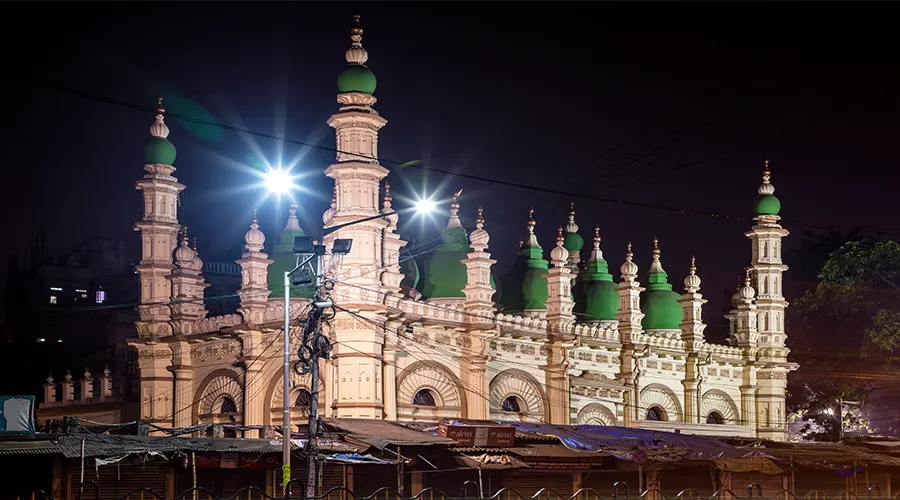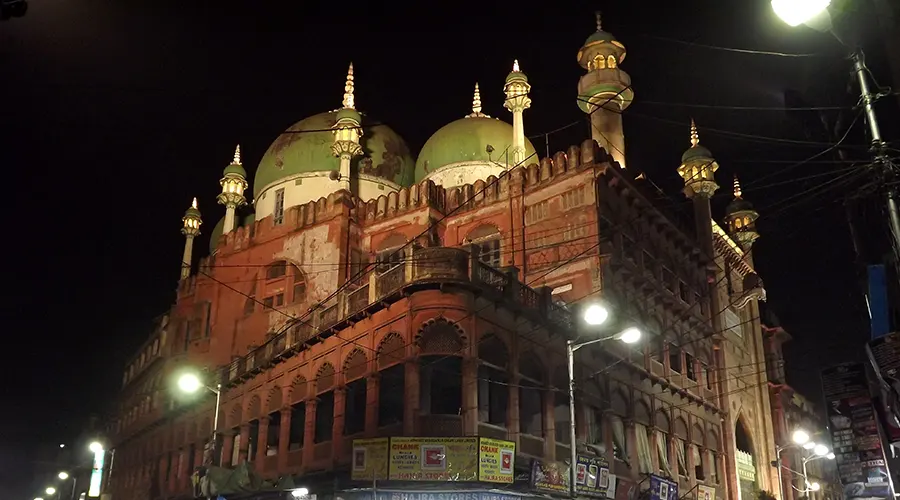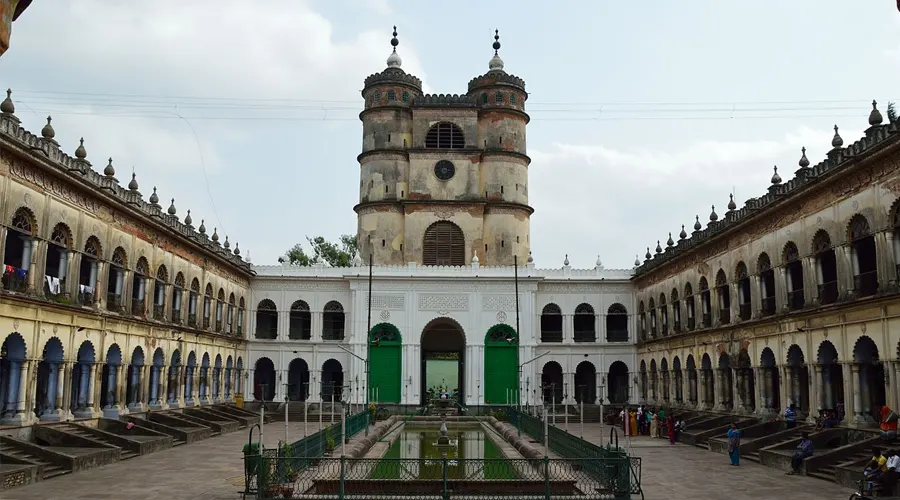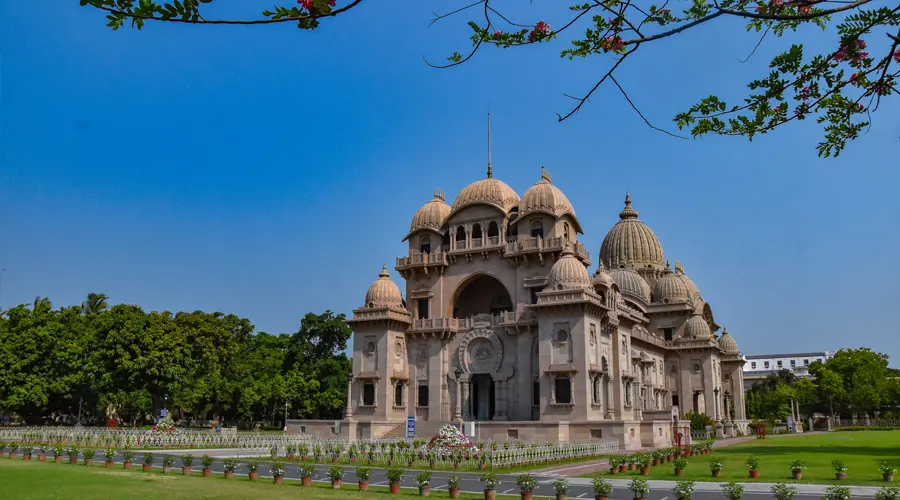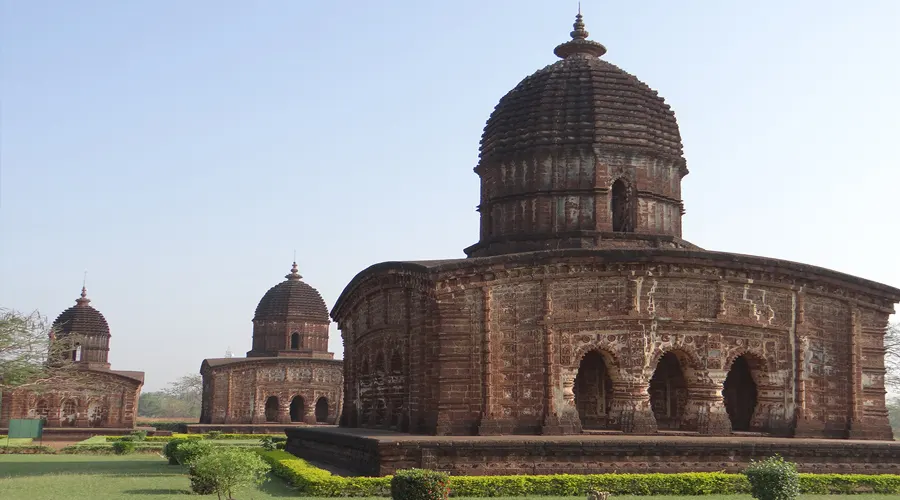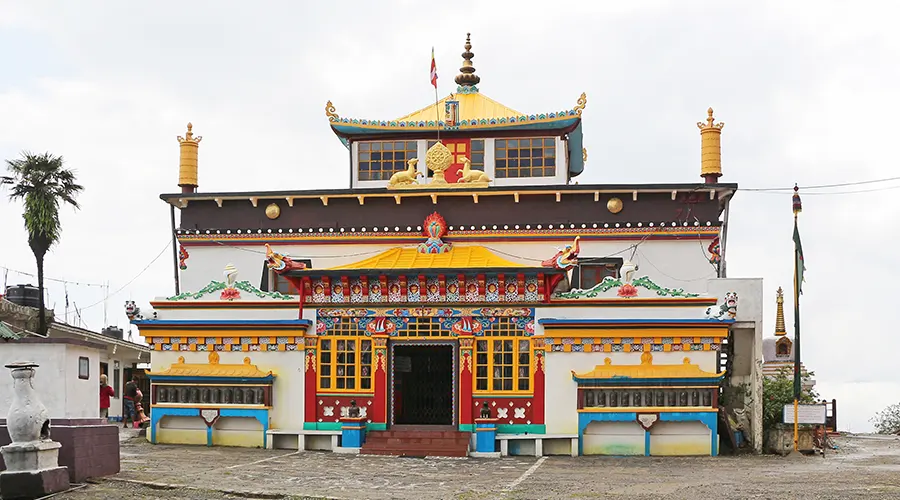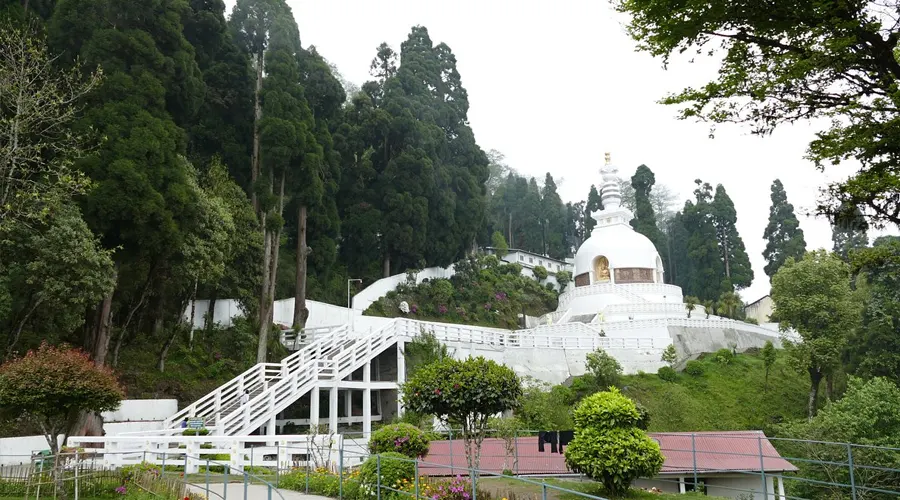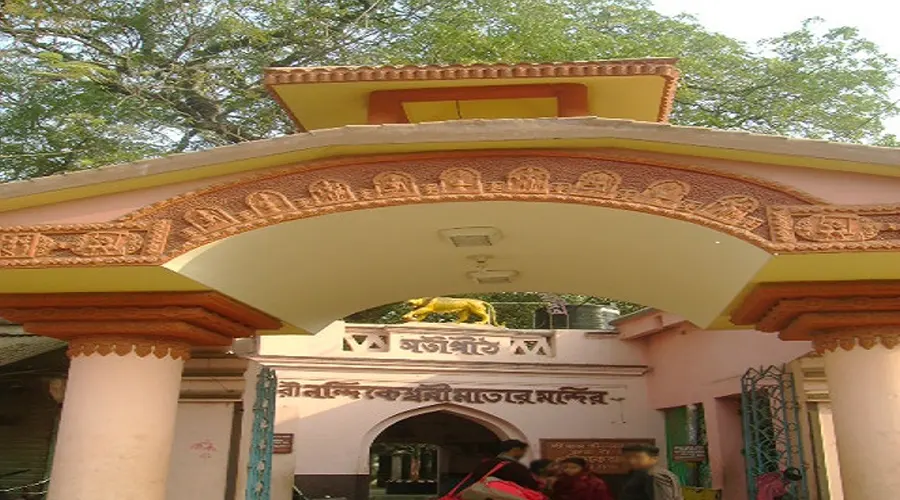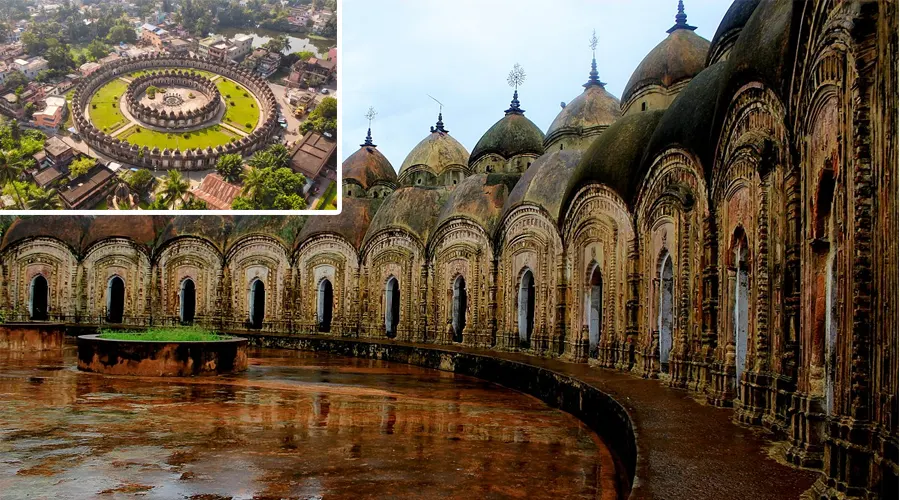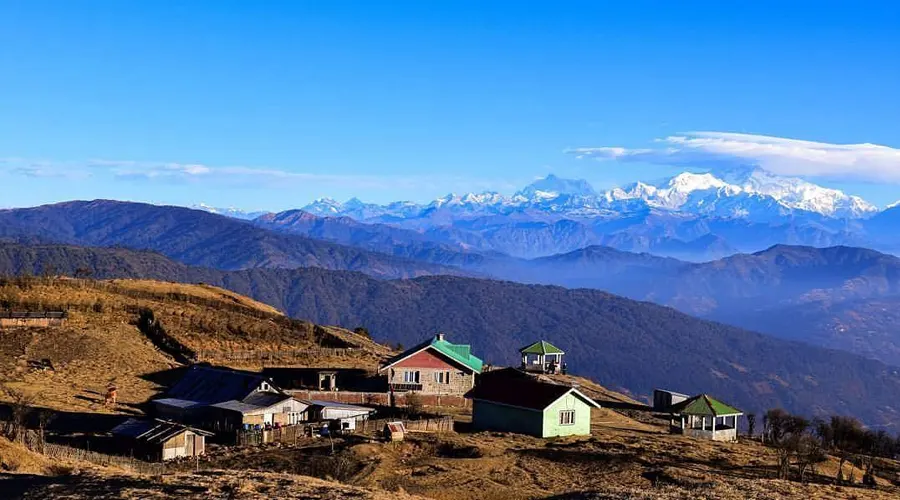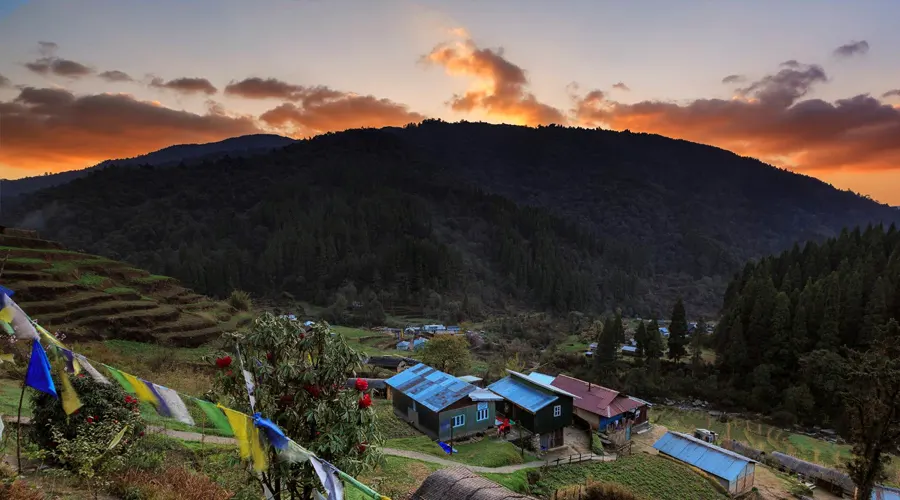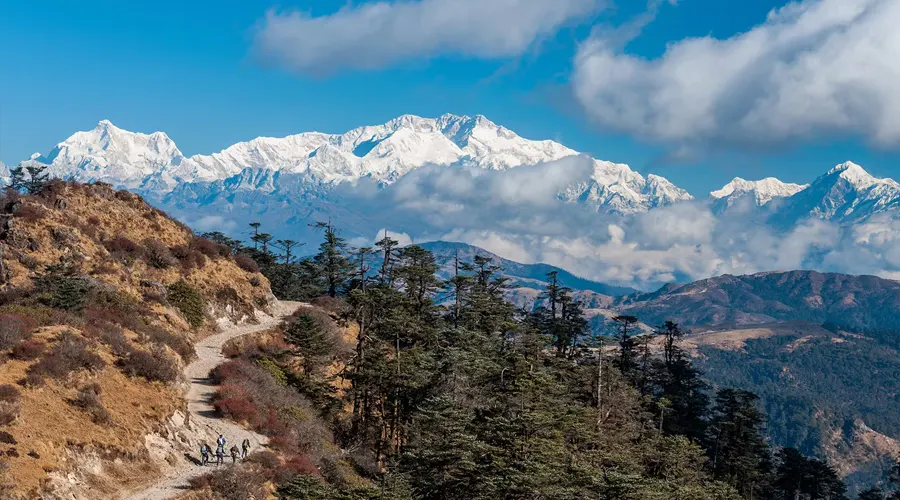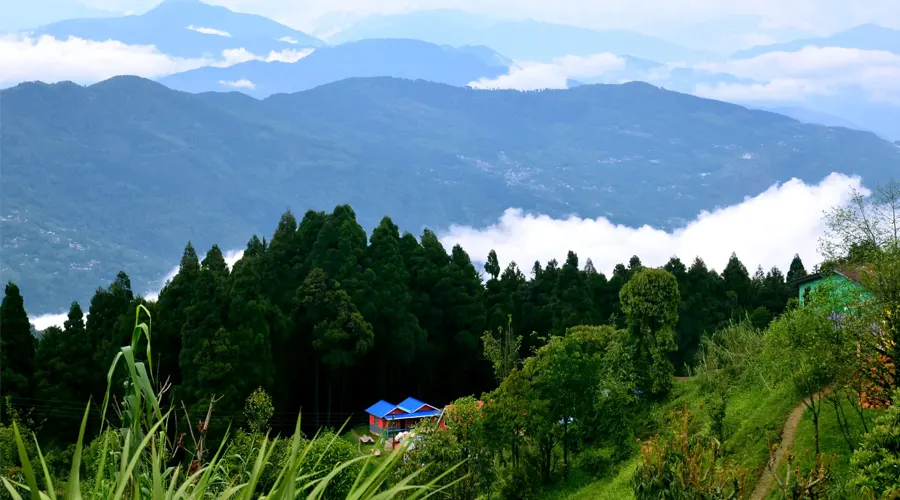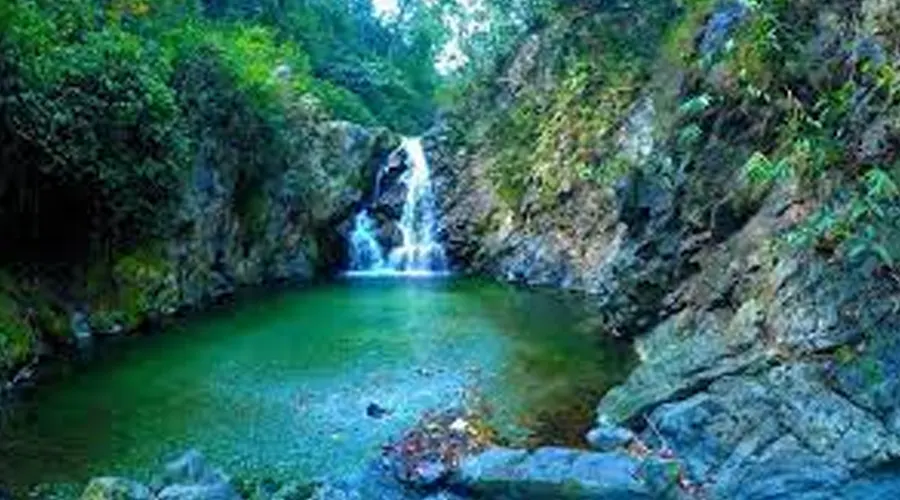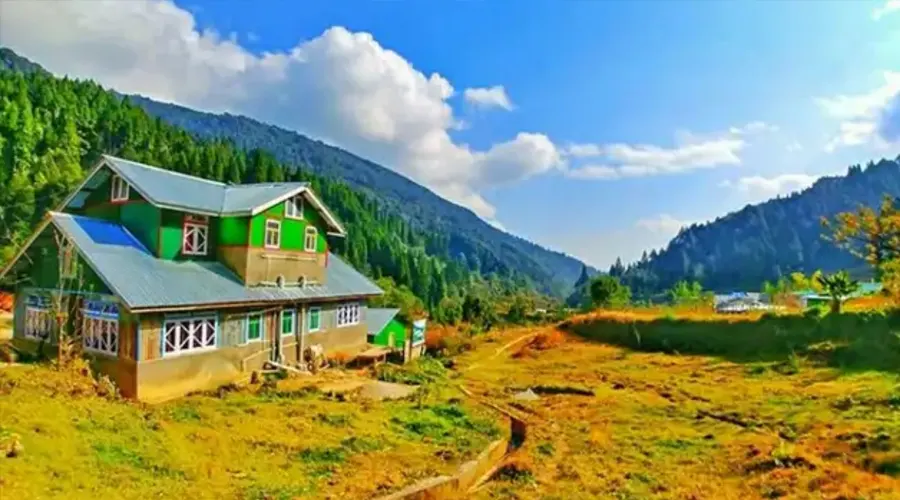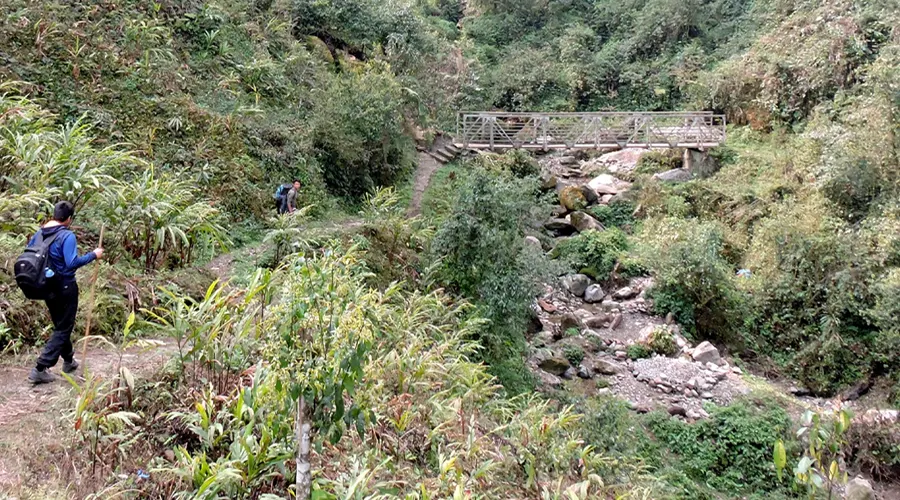Dakshineswar Kali Temple
A temple that resides in the heart of every single Bengali and is highly revered for being the sanctum sanctorum of Goddess Kali along with the place-of-stay of one of the greatest mystics and yogis of all times, Ramkrishna Paramhansa and his consort and spiritual companion, Maa Sarada Devi. The Dakshineshwar Kali Temple with the untiring efforts of Rani Rashmoni was the result of a dream that the Rani had seen before undertaking a pilgrimage to Benaras (now Varanasi).
The large temple complex has a series of 12 mandirs dedicated to Lord Shiva, a Radha-Krishna Temple, a bathing ghat, Rani Rashmoni's shrine, Nahavat-Khana, a chamber on the north-western part of the complex where Ramkrishna resided along with the main Kali Temple. With the traditional 'Nava-Ratna-styled Bengali architecture, the three-storey temple stands on a high platform with a fleet of stairs. Overlooking the Hooghly River and the Belur Math across, the Dakshineshwar Kali Temple stands tall with its historical association with some of the greatest names to have resided in the 'City of Joy', Kolkata.
History of Dakshineswar Kali Temple
In the early 1800s, Dakshineshwar was a small village surrounded by dense forest around the area where the present temple is situated.
The magnificent temple of Dakshineshwar was built by Rani Rashmoni, a philanthropist and devout believer in Goddess Kali. Legend has it that Rani Rashmoni wanted to go on a pilgrimage to Varanasi to offer prayers to the Mother Goddess. The night before she was scheduled to leave for Varanasi, she dreamt about the Goddess asking her to build a temple near the Ganges and set up a statue rather than going all the way to Varanasi.
Rani immediately started making arrangements to build a temple. After looking up several plots of land to construct the temple, she zeroed down on the 20-acre land by the eastern banks of the Ganges, part of which had a Muslim burial ground that also resembled a tortoise hump, which was considered apt for worshiping Shakti according to Tantra traditions.
Another part of the land belonged to a European named John Hasty and this part of the land was popularly known as Saheban Bagicha. The construction of a Hindu temple on a site, parts of which belonged to different faiths, signifies the unity of all faiths.
The huge temple complex was built in a period of 8 years, between 1845- 1855, at an estimated cost of INR 9 lakhs out of which INR 2 lakhs were spent on the day of inauguration. The idols of the Gods and Goddesses were scheduled for installation on the 31st of May 1855, the ‘snana-yatra’ day, an auspicious day for the Hindus. More than one hundred thousand Brahmins were invited from all over the country to grace the festivities and were fed. The temple was formally named Sri Jagadishwari Mahakali temple.
Ramkumar Chattopadhyay, Sri Ramakrishna's elder brother, was appointed as the head priest of the temple. He was assisted by his younger brother, Ramakrishna, who was then known by his name Gadadhar and nephew Hriday. However; Ramkumar passed away a year after the temple was inaugurated thus, all further responsibilities fell on the shoulders of young Ramakrishna along with his wife Sarada Devi. Sarada Devi stayed south of Nahabat (the music room) on the ground floor, which is now a shrine dedicated to her.
Ramakrishna was the major influence behind bringing in immense reputation as well as pilgrims to the temple during the next thirty years of his service towards the divine mother Goddess. He became an ardent seeker of Kali and also brought quite a few changes in the socio-religious condition of Bengal.
Rani Rashmoni, who was exceptionally broad-minded and benevolent, had always wanted the temple to be open to people from all sects of the society irrespective of their caste, creed, or religion. This tradition has been followed to date and the temple is thronged by pilgrims from all strata of society.
Rani Rashmoni didn’t live long enough to witness much of the temple’s glory as she passed away in February 1861, just 5 years and nine months post-inauguration of the temple. Realizing that she wasn’t going to live for long, she handed over a property at Dinajpur (part of present-day Bangladesh) as a part of the legacy for the maintenance of the temple and temple trust. Rani passed away on 18th February 1861, the day after she handed over the legal documents.
Architecture of Dakshineswar Kali Temple
The Dakshineshwar Kali Temple is built in ‘Nava-Ratna’ or nine spires style, very typical of ancient Bengali architecture. The main Kali temple is a three-storeyed south-facing monument with nine spires distributed in the upper two storeys.
The main temple is built in an area of around 46 Square feet and stands on a high platform that has a flight of stairs thereby giving the temple a height of over 100 feet (30m). There is a narrowly covered verandah that serves as an audience chamber. Additionally, there is also a spacious Natmandir built right in front of the temple.
The Garbha Griha (Sanctum Sanctorum) houses the idol of the deity. The Kali at Dakshineshwar is famously known as Bhavatarini and stands on the chest of the supine Shiva. The two idols stand on a thousand-petaled lotus made out of pure silver.
The courtyard of the main temple is surrounded by 12 identical mini Shiva temples standing in a row, facing east with interiors done in black and white stone finishes. Each of the temples houses a Shivalinga made out of black stone. The temples have been constructed in the ‘Aat- Chala’ (eight eaves) architectural style, typical of Bengal architecture. The 12 Shiva temples were constructed keeping 12 jyotirlingas in mind. It is here in these Shiva temples that Sri Ramakrishnan Paramhansa used to meditate and is believed to have reached enlightenment.
A Vishnu temple with idols of Radha and Krishna is located at the northeast end of the main temple. This temple is also called Radha Kanta’s temple and is located on a high platform with a flight of stairs leading inside. The Lord Krishna idol that resides in the Vishnu temple is 21 and a half inches and the idol of Radha is 16 inches.

